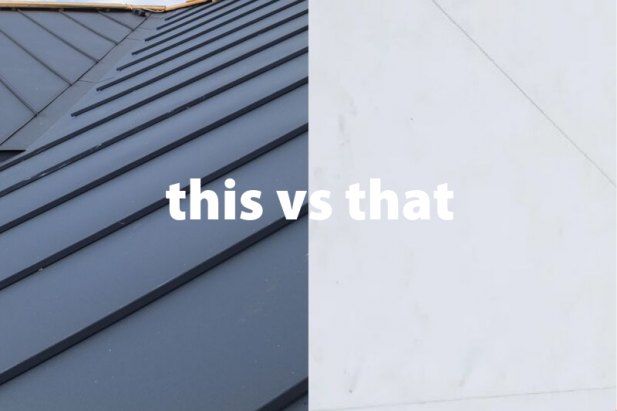
This vs. that: white TPO versus black roofing
What to consider when choosing the right roof for your build
Among the hundreds of micro-decisions that must be made when you’re building is the decision of selecting a roof membrane. It’s about much more than aesthetics: white TPO roofing and black roofing have their own benefits and drawbacks. Here’s a closer look at the situations in which each might work best, the budget considerations and other factors that come into play.
Black roofing
A black roofing system can have many benefits, but there are also some factors that may give you pause. An EPDM roof (Ethylene Propylene Diene Terpolymer) or a rubber roof system is a common black roofing system. Here’s what you should know about black roofing.
- In colder climates, black roofs are often favored. Black roofs tend to offer a heating benefit in the winter and may lower building heating costs over white roofing.
- In cold weather, condensation on black roofs tends to evaporate more quickly.
- Ice and snow melt faster on black roofs than on white roofing.
- Black roof systems typically absorb more heat than a white roof.
- A black EPDM membrane can cost $7.00-$12 per installed square foot on a regular, flat or low-slope roof.
- EPDM has a life expectancy of about 10-20 years.
- EPDM comes in wider sheets than TPO, so there may be fewer seams.
- EPDM is typically glued at the seams, which can make it vulnerable to failure in the face of freezing water.
White TPO Roofing
White TPO roofing, or thermo-plastic olefin, is a membrane made of ethylene propylene rubber that also has pros and cons.
- TPO roofs must be installed on flat roof or low slope surfaces.
- White TPO roofing is shown to provide the best solar radiant heat reflection. It is a popular choice in warmer climates because it may reduce the dependence on cooling systems.
- It is a popular choice among those who are considering energy-saving options. TPO membrane is Energy Star rated.
- TPO roofing is durable and resists buildup of dirt, bacteria and algae.
- TPO roofing stands up to exposure to UV light as well as ozone and chemicals.
- Hot-air welded seams for TPO roofing can be several times stronger than EPDM adhesive and tape seams.
- TPO is 100% recyclable.
- Because TPO is a relatively new technology, quality varies widely, with some performing better than others. Be sure to purchase from a reputable manufacturer who offers a product warranty.
- White TPO roofing can cost $7.00 – $14 per square foot, installed.
- TPO has a projected life expectancy of 10-20 years.
- Poor weldability leads to poor performance and the potential for leaks, so be sure to purchase a durable TPO roof that can be welded at the highest temps.
- Thicker TPO membrane provides greater protection and durability.
Roofing: it’s not just a black and white issue
With all of their differences, black and white membrane roofing systems have similar maintenance requirements, which may include annual power washing and perhaps professional preventative maintenance. As you can see here, it’s much more than a black and white issue; the roofing you select varies in benefits, costs and durability.